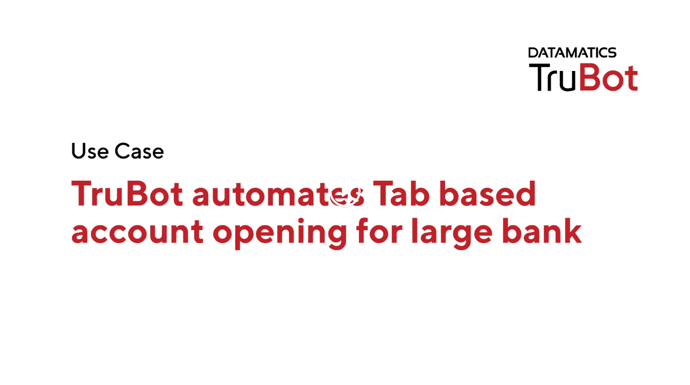8 key tenets for digital transformation of small and medium enterprises
by Sachin Rane, on Oct 31, 2019 3:45:00 PM
Estimated reading time: 3 mins
Digital transformation is a buzzword for the uninitiated; especially so in the tier-1 and tier-2 cities. Quite to the contrary, it is no more a ‘nice to have’ but a ‘must have’ option for sustenance. It is a business enabler with the primary driver being delivering value.

Traditional modes of transaction such as paper-based forms and over-the-counter cash for goods’ purchase are still used due to natural biases towards the technology aptitude of the general public. Though rest assured that the biggest digital platform is the Indian Railways ticketing system, which is used widely even by the commoners.
Having said this, digital transformation though not easy is neither difficult. Even kirana stores or grocery stores in India are towing the digital transformation route (Economic Times - 29-May-2019). As a matter of fact, Brownfield projects are always a notch challenging than Greenfield ones. Yet quite a few Small to Medium Enterprises (SMEs) in the BFSI sector, Fintechs, and NBFCs have achieved the capability of disbursing loans in 3 minutes. Finally, what really matters for sustenance is the end-user experience; especially so in this digital era.
Understand how a leading bank used Tab Banking to transform their account opening process.
Watch now >>
5 challenges of digital transformation
Challenges encountered while moving from the physical world to the digital:
- Architecture
- Biases
- Know-how
- Blinders
- Limited capital
- Architecture: End-users need a digital experience and not a digital tool. You have to think all around right from the system configuration perspective to compliance and cybersecurity.
- Biases: The users within the enterprise need to get over the hang-ups about digital. They have to understand that technology is not a foe but a friend.
- Know-how: A transformation roadmap is the most difficult to design than augmenting the technology expertise itself.
- Blinders: A narrow thinking hampers change management. It further hinders the ability to think out-of-the-box to achieve the desired results. For example: Intelligent Data Capture and Computer Vision helped people in China to simplify a time-consuming onboarding process to less than 0.25 min.
- Limited capital: While investing in technology, capital is scarce and needs to be reallocated between priorities while postponing the other needs.
How to undertake Digital transformation?
Sometime back, I had conducted a group discussion with stalwarts from digitally savvy NBFCs. The panel included Ashok Suvarna, COO, Aditya Birla Sun Life Insurance Co. Ltd., Kamlesh Manuja, Head of Business Operations, Edelweiss Tokio Life Insurance, and Kayzad Hiramanek, EVP Operations & Customer Experience, Bajaj Allianz Life. Some interesting points emerged from the group think, which I have articulated for the benefit of many of us in the Digital Transformation journey.
8 key tenets for digital transformation
Digital provides opportunities and amplifies the reach at a much lower cost as compared to the physical domain comprising paper-based forms, etc. Though there are a few must-haves during a digital transformation:
Must-haves of a digital transformation -
- Simplify
- Overcome biases
- Think end-user experience
- Communicate
- Transform in phases
- Convert challenges to opportunities
- Use chatbots
- Engage technology partners
- Simplify: Users across demographics appreciate quick and easy access to the solution. Think simplicity while designing online platforms.
- Overcome biases: Technology has a deep reach. Technology is the same for a person sitting in the corner office and to a person tilling the fields. Simplicity of usage is appreciated by everybody.
- Think end-user experience: Technology as an enabler should be used to guarantee customer satisfaction even without the presence of the customer in person. Both efficiency and profitability will follow.
- Communicate: The design strategy formulated in the higher rungs should be effectively communicated to the last mile of integration to get a WYSIWYG output.
- Transform in phases: A big bang approach seldom sees the light of the day. Even if it sees, it is not first-time-right. Chart the transformation in small phases such that learning from one can be incorporated in the other.
- Convert challenges to opportunities: A technology platform should be intuitive. By providing user assistance in the form of easily accessible voice-based help, video calls, and even vernacular language-support helps in reaching out to the masses. This facilitates leveraging of the customer service segment for cross-selling and up-selling.
- Use chatbots: Deploy bots to easily navigate about the platform to reduce the load on the customer service desk and extend the reach.
- Engage technology partners: They lend the savvy in designing and developing the platform along with the rich knowledge base they have developed through numerous implementations. They help you think out-of-the-box to optimize the limited availability of capital.
In summary
Digital is all around, right from the grocery stores or kirana stores to the railway ticket booking. Going digital not only helps extend the reach to the masses but also helps to cross leverage utilities and functions. It is the silver bullet for sustained expansion in a competitive market.


















